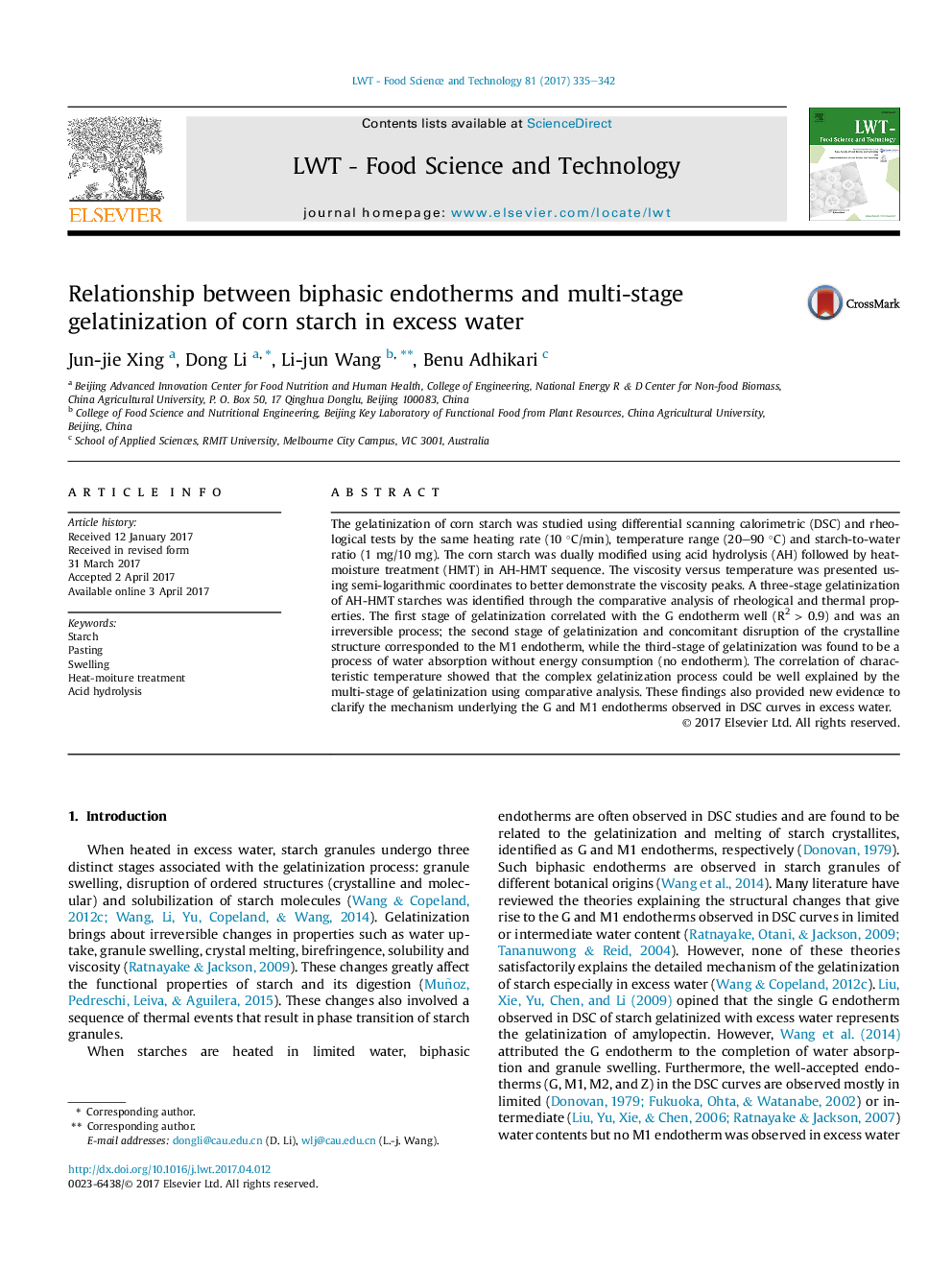| Article ID | Journal | Published Year | Pages | File Type |
|---|---|---|---|---|
| 5768507 | LWT - Food Science and Technology | 2017 | 8 Pages |
â¢Biphasic endotherms were found in DSC curves under excess water conditions.â¢The first viscosity peak is regarded as unique feature during starch gelatinization.â¢Three-stage of swelling was identified by comparation analysis of gelatinization.â¢The first endotherm in DSC correlated well with the first viscosity peak.â¢The third-stage of swelling is a process without energy consumption.
The gelatinization of corn starch was studied using differential scanning calorimetric (DSC) and rheological tests by the same heating rate (10 °C/min), temperature range (20-90 °C) and starch-to-water ratio (1 mg/10 mg). The corn starch was dually modified using acid hydrolysis (AH) followed by heat-moisture treatment (HMT) in AH-HMT sequence. The viscosity versus temperature was presented using semi-logarithmic coordinates to better demonstrate the viscosity peaks. A three-stage gelatinization of AH-HMT starches was identified through the comparative analysis of rheological and thermal properties. The first stage of gelatinization correlated with the G endotherm well (R2 > 0.9) and was an irreversible process; the second stage of gelatinization and concomitant disruption of the crystalline structure corresponded to the M1 endotherm, while the third-stage of gelatinization was found to be a process of water absorption without energy consumption (no endotherm). The correlation of characteristic temperature showed that the complex gelatinization process could be well explained by the multi-stage of gelatinization using comparative analysis. These findings also provided new evidence to clarify the mechanism underlying the G and M1 endotherms observed in DSC curves in excess water.
